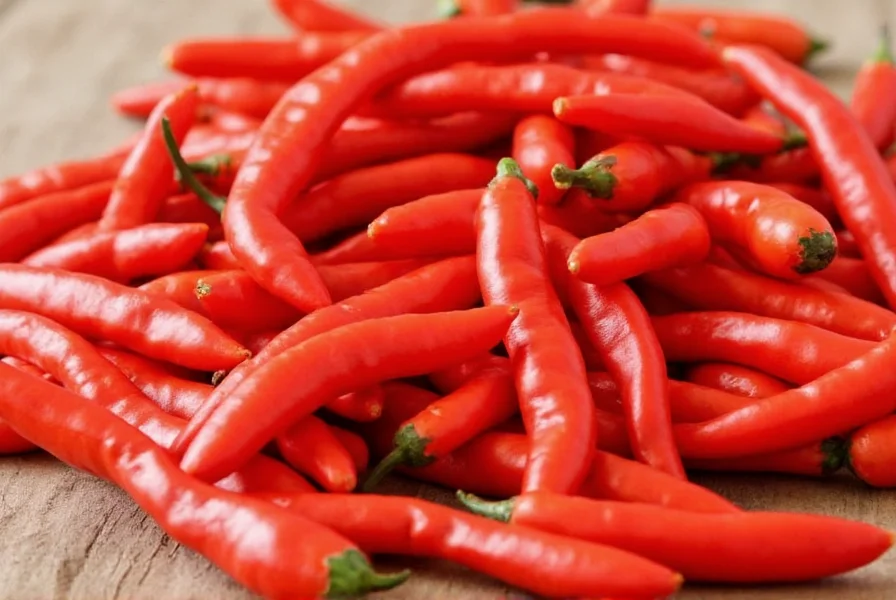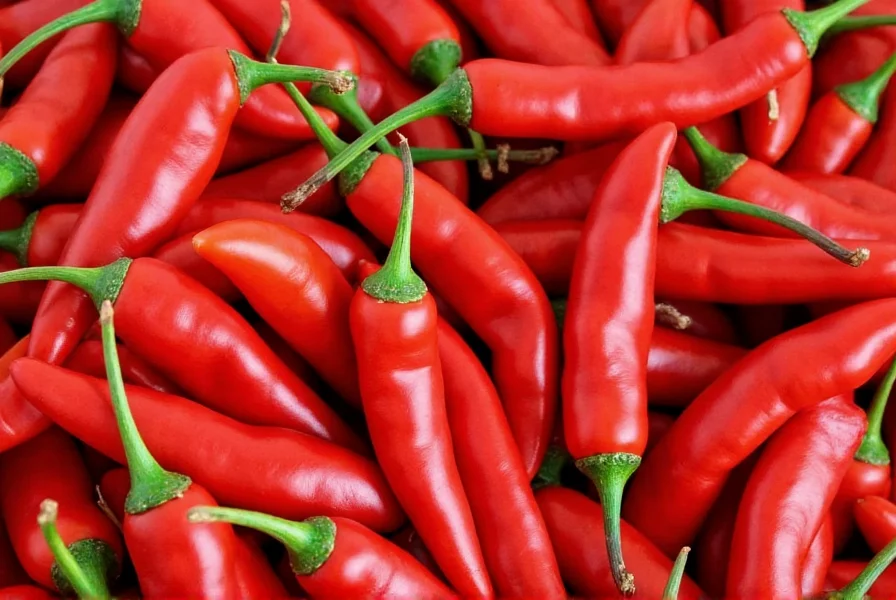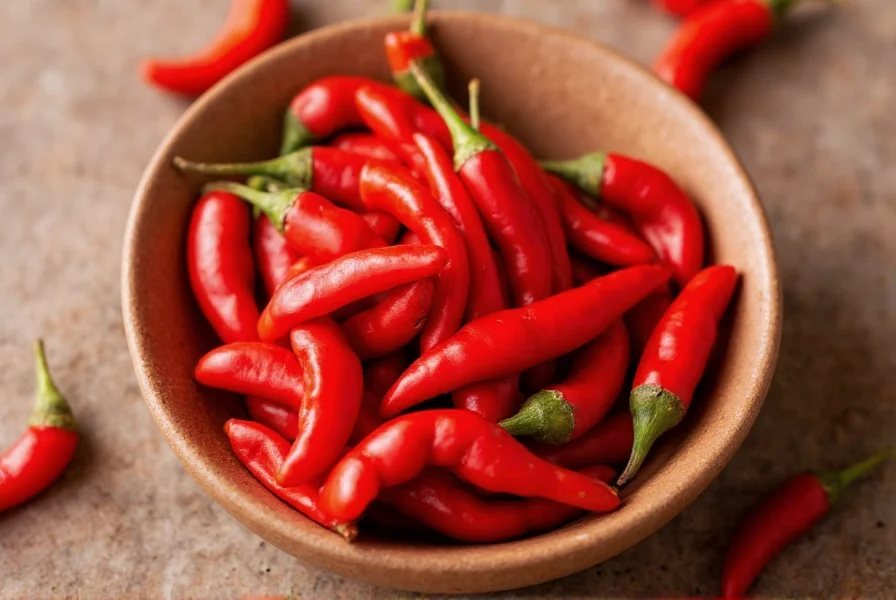Cayenne pepper (Capsicum annuum), a vibrant red chili with a storied history in traditional medicine, has gained significant attention in modern nutritional science. This fiery spice contains capsaicin, its primary bioactive compound, which interacts with sensory neurons to produce both its characteristic heat and numerous physiological effects. While not a cure-all, substantial research reveals cayenne pepper's potential to support various aspects of human health when incorporated as part of a balanced diet.
The Science Behind the Heat
Capsaicin, comprising 0.1-1.5% of dried cayenne pepper, binds to TRPV1 receptors throughout the body. These receptors, part of our sensory nervous system, typically respond to heat and physical abrasion. When activated by capsaicin, they trigger a cascade of biological responses that explain many of cayenne's health effects. Unlike many dietary supplements, capsaicin's mechanisms are well-documented in over 2,700 scientific studies, providing solid ground for understanding its potential benefits.

20 Evidence-Based Benefits of Cayenne Pepper
1. Natural Pain Relief
Capsaicin depletes substance P, a neuropeptide that transmits pain signals. Topical creams containing 0.025-0.075% capsaicin show significant pain reduction for osteoarthritis, with studies demonstrating up to 50% improvement in pain scores after 4 weeks of use. The FDA has approved capsaicin patches for post-herpetic neuralgia treatment.
2. Metabolic Enhancement
Research in the American Journal of Clinical Nutrition shows capsaicin increases energy expenditure by approximately 50 calories daily through thermogenesis. While not a weight loss solution alone, this metabolic boost, combined with reduced appetite (studies show up to 16% lower calorie intake), creates a modest but meaningful advantage for weight management.
3. Cardiovascular Support
Regular consumption correlates with lower blood pressure in population studies. Capsaicin activates potassium channels that help relax blood vessels, improving endothelial function. A 10-year study of 500,000 adults in China found those consuming spicy foods 6-7 days weekly had a 14% lower risk of death from heart disease.
4. Anti-Inflammatory Properties
Capsaicin modulates NF-kB, a key inflammation pathway. In vitro studies demonstrate reduced production of inflammatory cytokines like TNF-alpha and IL-6. While human trials are ongoing, these mechanisms suggest potential benefits for inflammatory conditions when consumed regularly.
5. Digestive Health Improvement
Contrary to popular belief, cayenne pepper stimulates mucus production in the stomach lining, potentially protecting against ulcers. It also enhances gastric motility, reducing symptoms of functional dyspepsia. A clinical trial showed significant improvement in upper abdominal pain and bloating after 30 days of cayenne consumption.
6. Immune System Support
One tablespoon of cayenne pepper provides 44% of the daily recommended vitamin C. This antioxidant supports white blood cell function and enhances iron absorption from plant foods, creating a dual benefit for immune health.
7. Respiratory Relief
The heat from capsaicin thins mucus and stimulates ciliary movement in airways. This explains why many traditional cold remedies include spicy ingredients. While not a treatment for respiratory conditions, it may provide symptomatic relief during upper respiratory infections.
8. Blood Sugar Regulation
Animal studies show capsaicin improves insulin sensitivity, and emerging human research suggests potential benefits. A study in Diabetes Care found participants who consumed capsaicin with meals had 23% lower postprandial glucose levels compared to controls.
9. Antioxidant Protection
Beyond vitamin C, cayenne contains flavonoids like quercetin and luteolin. These compounds combat oxidative stress, with ORAC (Oxygen Radical Absorbance Capacity) values showing cayenne pepper has approximately 3-4 times the antioxidant capacity of blueberries by weight.
10. Potential Cancer Prevention
Lab studies indicate capsaicin may induce apoptosis in certain cancer cell lines, particularly prostate cancer. While human evidence remains limited, population studies in regions with high chili consumption show lower rates of certain gastrointestinal cancers, suggesting a possible protective effect.
11. Migraine Relief
Intranasal capsaicin has shown promise in reducing migraine frequency and severity. A clinical trial reported 76% of participants experienced at least 50% reduction in migraine days after 8 weeks of treatment, likely due to its effect on trigeminal nerve pathways.
12. Skin Health Benefits
Topical capsaicin improves circulation to the skin and shows potential in treating psoriasis. The American Academy of Dermatology recognizes capsaicin cream as an effective option for reducing psoriatic plaque severity and associated itching.
13. Dental Pain Management
Research in Journal of Oral Rehabilitation demonstrates capsaicin's effectiveness in managing toothache pain. Its mechanism differs from traditional analgesics, making it a potential complementary option for dental pain when used appropriately.
14. Enhanced Nutrient Absorption
Capsaicin increases the bioavailability of certain nutrients, particularly fat-soluble compounds. Studies show it can enhance the absorption of curcumin by up to 154% and improve the uptake of coenzyme Q10, making it valuable when combined with other health-promoting foods.
15. Exercise Performance Support
Some research suggests capsaicin may reduce perceived exertion during exercise. A study in Physiology & Behavior found cyclists who consumed capsaicin before exercise reported lower rates of perceived exertion and could maintain higher power output for longer periods.
| Benefit Category | Scientific Support Level | Recommended Daily Amount |
|---|---|---|
| Pain Relief | High (FDA-approved topical) | 0.025-0.075% topical |
| Metabolic Boost | Moderate | 30-130mg capsaicin |
| Cardiovascular Support | Moderate-High | Regular dietary inclusion |
| Anti-Inflammatory | Moderate | 30-120mg capsaicin |
16. Sinus Congestion Relief
The thermogenic effect of cayenne pepper stimulates secretions that clear nasal passages. While temporary, this provides immediate relief from sinus pressure and congestion, making it a valuable natural remedy during cold and allergy seasons.
17. Gut Microbiome Support
Emerging research suggests capsaicin may positively influence gut bacteria composition. Animal studies show increased abundance of beneficial Akkermansia bacteria, which is associated with improved metabolic health and reduced inflammation.
18. Bone Health Support
Vitamin K in cayenne pepper (providing about 7% of daily value per tablespoon) contributes to bone mineralization. While not a primary source, regular consumption as part of a varied diet supports overall bone health, particularly when combined with other vitamin K-rich foods.
19. Mood Enhancement
Capsaicin triggers endorphin release, creating a natural mood boost. This 'chili high' explains why many cultures incorporate spicy foods in celebratory meals. The effect, while temporary, provides a natural mechanism for improving emotional well-being through diet.
20. Food Safety Enhancement
Historically, chili peppers were used to preserve food in tropical climates. Modern research confirms capsaicin's antimicrobial properties inhibit foodborne pathogens like E. coli and Salmonella, suggesting potential benefits for food safety when incorporated into meal preparation.
Practical Incorporation into Your Diet
Start with small amounts (1/8-1/4 teaspoon daily) to assess tolerance. Add to soups, stews, roasted vegetables, or smoothies. For therapeutic benefits, consistent daily consumption matters more than large single doses. Consider cayenne pepper in morning lemon water (1/4 teaspoon) as a traditional digestive aid. Those with gastrointestinal sensitivities should consult healthcare providers before regular consumption.

Important Considerations and Precautions
While generally safe as a food ingredient, concentrated capsaicin supplements require caution. Potential side effects include gastrointestinal discomfort, particularly in those with IBS or ulcers. Avoid contact with eyes and sensitive skin. Those taking blood thinners should consult physicians due to potential interactions. Pregnant and breastfeeding women should consume in typical food amounts only. Always discuss therapeutic use with healthcare providers, especially if managing chronic conditions.
Frequently Asked Questions
How much cayenne pepper should I consume daily for health benefits?
For general health benefits, 1/4 to 1/2 teaspoon (30-130mg capsaicin) daily is sufficient. Start with smaller amounts (1/8 teaspoon) if new to spicy foods. Consistent daily consumption provides more benefit than occasional large doses. Those using cayenne for specific therapeutic purposes should consult healthcare providers for personalized recommendations.
Can cayenne pepper help with weight loss?
Cayenne pepper may support weight management through modest metabolic boost (increasing calorie burn by about 50 calories daily) and appetite reduction (studies show up to 16% lower calorie intake). However, it's not a standalone solution. When combined with a balanced diet and regular exercise, it can be a helpful component of a weight management strategy, but expectations should be realistic.
Is cayenne pepper safe for people with stomach ulcers?
Contrary to popular belief, moderate cayenne consumption may actually benefit stomach health by stimulating protective mucus production. However, those with active ulcers or severe gastritis should consult their healthcare provider before regular consumption. Start with very small amounts and monitor symptoms. Most research suggests typical culinary use is safe, but therapeutic doses require medical guidance.
What's the difference between cayenne pepper and regular chili powder?
Cayenne pepper is made solely from ground cayenne peppers and typically measures 30,000-50,000 Scoville Heat Units. Regular chili powder is a blend that usually includes cayenne but also other mild peppers, cumin, garlic powder, and oregano, resulting in much lower heat (typically 500-1,500 SHU). For therapeutic benefits, pure cayenne pepper provides more consistent capsaicin content than generic chili powder blends.











 浙公网安备
33010002000092号
浙公网安备
33010002000092号 浙B2-20120091-4
浙B2-20120091-4